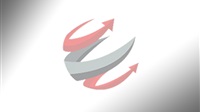Iran’s hard-liners take early lead in Tehran after vote

Iranian state TV on Saturday announced the first
partial results from the country’s parliamentary elections, indicating a strong
showing by hard-liners in the capital Tehran, although authorities have not
released full results or the all-important turnout figure.
Voters had limited options on Friday’s ballot, as
more than 7,000 potential candidates had been disqualified, most of them
reformists and moderates. Among those disqualified were 90 sitting members of
Iran’s 290-seat parliament who had wanted to run for re-election.
Although the final tally was still not released, a
lower-than-usual turnout would signal widespread dissatisfaction with the state
of the economy and the ways in which the government has handled a range of
crises.
State TV, without providing the number of votes,
announced the names of the leading candidates in Tehran’s 30 parliamentary
seats. All were hard-liners led by Mohammad Bagher Qalibaf, who is expected to
be the next parliament speaker.
Looming over the election was the threat of the new
coronavirus. Many voters headed to the polls with face masks on, and some
pharmacies ran out of masks and hand sanitizer amid the election-day rush.
So far, there have been five coronavirus deaths from
among the 28 confirmed cases in Iran, including two deaths on election day.
Another fatality was reported on Saturday, although the exact time was not
specified.
By comparison, the 2016 parliamentary election saw
62% turnout. On Friday, election officials kept the polls open an extra five
hours in an effort to boost turnout. Iran’s leadership and state media had
urged people to show up and vote, with some framing it as a religious duty.
A parliament stacked with hard-liners could tilt
public policy debates away from engagement with the United States. Tensions
between Washington and Tehran have been high since 2018, when President Donald
Trump withdrew the U.S. from Iran’s nuclear agreement with world powers, and
imposed sanctions that have forced Iran’s economy into recession. Iranians have
seen the price of basic goods skyrocket, inflation and unemployment rise and
the local currency plummet.
The economic woes faced by ordinary Iranians fueled
anti-government protests in November. International human rights groups say at
least 300 people were killed in those protests.
A more hard-line parliament could also favor
expanding the budget of the Revolutionary Guard Corps. The Guard’s elite Quds
Force, responsible for the Islamic Republic’s campaigns abroad, was formerly
led by Iran’s top general, Qassem Soleimani. He was killed by the U.S.
airstrike in January.
That strike led to a tense confrontation in which
Iranian forces accidentally shot down a Ukrainian passenger plane after it took
off from Tehran, killing all 176 people on board. Most of those killed were
Iranian.
The shoot-down, and attempts by officials to
initially conceal the cause of the crash, sparked public anger and protests in
Iran.
A more hard-line parliament could lead to increased
social and cultural restrictions as well. Pressure from conservatives in recent
years has led authorities to ban concerts and block Facebook, Twitter and
YouTube.







